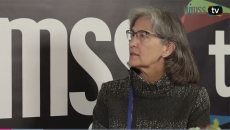Connected Health
Connected Health
It’s a matter of change management – and there are some applicable best practices.
The HIMSS event runs September 16-18, 2019 in Santa Clara, California.
Connected Health
Digital transformation is a top priority at most healthcare organizations today, but progress so far has been fragmented.
Connected Health
The VEVA tool has helped improve caregiver productivity and efficiency – and providers appreciate that it reduces the number of clicks per query.
Patient-generated data from apps, devices and digital therapeutics will make personal health dashboards that manage wellness possible, says HIMSS Personal Connected Health Alliance Director of Thought Advisory John Sharp.
It starts with input from the front lines and includes outside partners to truly understand the problems and continues through the entire tech lifecycle.
The facility will feature touchscreens for interactive pre-surgical planning and better visualization of results, the system said.
The system worked with a patient design team and turned the metrics of success upside down, for starters.
More than 50 percent of patients are willing to share personal data with insurers, a survey has found.
A cloud-based communication platform from Switzerland will be added to the startup network of the Health Hub Vienna.

